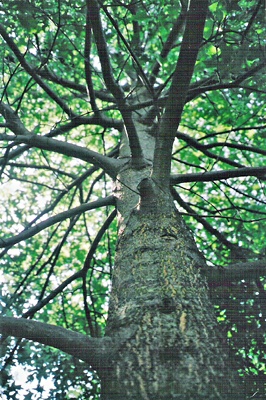All Nonfiction
- Bullying
- Books
- Academic
- Author Interviews
- Celebrity interviews
- College Articles
- College Essays
- Educator of the Year
- Heroes
- Interviews
- Memoir
- Personal Experience
- Sports
- Travel & Culture
All Opinions
- Bullying
- Current Events / Politics
- Discrimination
- Drugs / Alcohol / Smoking
- Entertainment / Celebrities
- Environment
- Love / Relationships
- Movies / Music / TV
- Pop Culture / Trends
- School / College
- Social Issues / Civics
- Spirituality / Religion
- Sports / Hobbies
All Hot Topics
- Bullying
- Community Service
- Environment
- Health
- Letters to the Editor
- Pride & Prejudice
- What Matters
- Back
Summer Guide
- Program Links
- Program Reviews
- Back
College Guide
- College Links
- College Reviews
- College Essays
- College Articles
- Back
Green Crusader
The rolling sand dunes stretched as far as the eye could see, reaching from the eastern horizon to the western skyline. I was in Inner Mongolia, standing on what was once lush green pastureland in the realm of Genghis Khan. Time treated the land no better than it did the Mongols: the desert surroundings were arid, dusty and completely devoid of life. I placed a drought-resistant plant in a freshly dug hole, one of 750 trees our small group of 12 student volunteers planted that summer during my first year in high school.
During that trip to Engebei, I witnessed the consequences of habitat destruction and soil erosion caused by rampant deforestation. What I witnessed was devastating, but that trip sparked my passion for the environmental sciences and greatly increased my awareness about sustainability issues. The Mongol Genghis Khan earned the dubious title of being a “Green Invader,” because pastureland returned after he decreased the human population that wore it away. While I don’t plan on eradicating humans, I am becoming a Green Crusader.
As soon as I returned from Mongolia, I began to read and research articles related to environmental degradation, pollution, habitat destruction and climate change. My coursework helped me understand how fragile living systems are and the dire need to restore the balance. For example, I learned about eutrophication, a form of water pollution caused by fertilizer runoff. This is a critical issue in habitats such as the Pacific Flyway, where migratory birds and waterfowl depend on fragile ecosystems. In chemistry, I became acutely aware of how important pH-balance is, especially when sulfur dioxide is released into the atmosphere, reacts with moisture, and becomes acid rain. Equally destructive is carbonic acid, resulting from carbon emissions and leading to ocean acidification. Every scrap of food wasted, every reusable product thrown away is more carbon dioxide, sulfur dioxide, and other toxins released into the atmosphere. The more I learned, the more distressed I became: how are people so oblivious to the destruction? Whenever I see a plastic container tossed into the trash, I cringe because I know the environmental cost.
Solution: Education is the key to cleaning up and preserving our precious environment. Thus, I founded an environmental club at my high school and have worked to bring about a change in my community. We started off with small projects, like restoring natural habitat by removing invasive plant species and replanting natives. We are currently focused on installing water-free urinals in our school bathrooms to both reduce water use and to reduce the amount of chemicals being used for waste treatment. Our club, Youth Environmental Services (YES), plans to expose the problems of wasting precious water, especially during California’s current drought, by inviting our families and posting flyers about Town Hall meetings at our school, paving the way for other forms of environmental education. Although it seems that a small number of people cannot tip the scale, small actions accumulate into something greater.

Similar Articles
JOIN THE DISCUSSION
This article has 2 comments.
